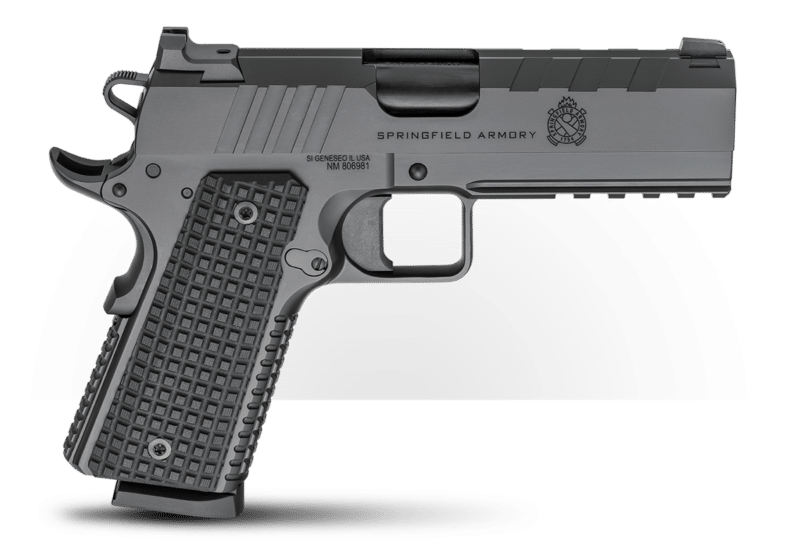M1919A6 Light Machine Gun — America’s Unhappy Compromise
December 20th, 2022
7 minute read
The .30-caliber Browning M1919A4 machine gun was one of the most popular, and effective, U.S. infantry weapons of World War II. It was an enduring design and remained in service until the 1960s. Even so, there were concerns voiced during WWII that the M1919A4 took too long to get into action when using the gun from the M2 tripod, and this left the crew (as well as the infantrymen they supported) vulnerable to enemy fire.
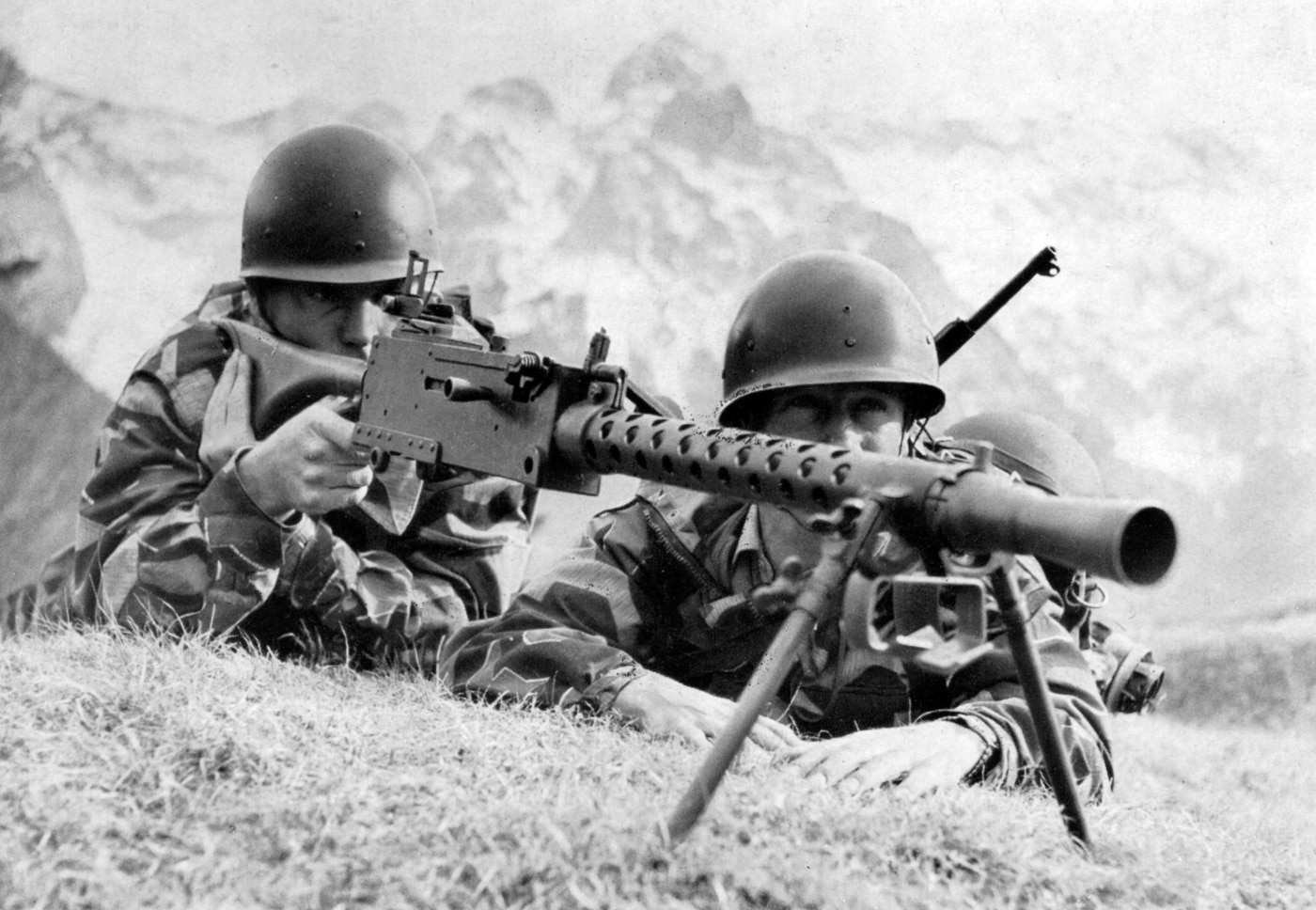
Regarding the development of a lighter machine gun for U.S. forces, a difference of opinion flared between the Ordnance Department and the Infantry Board. The Ordnance men wanted to develop a completely new “general purpose” MG, something akin to the German MG34 and MG42.
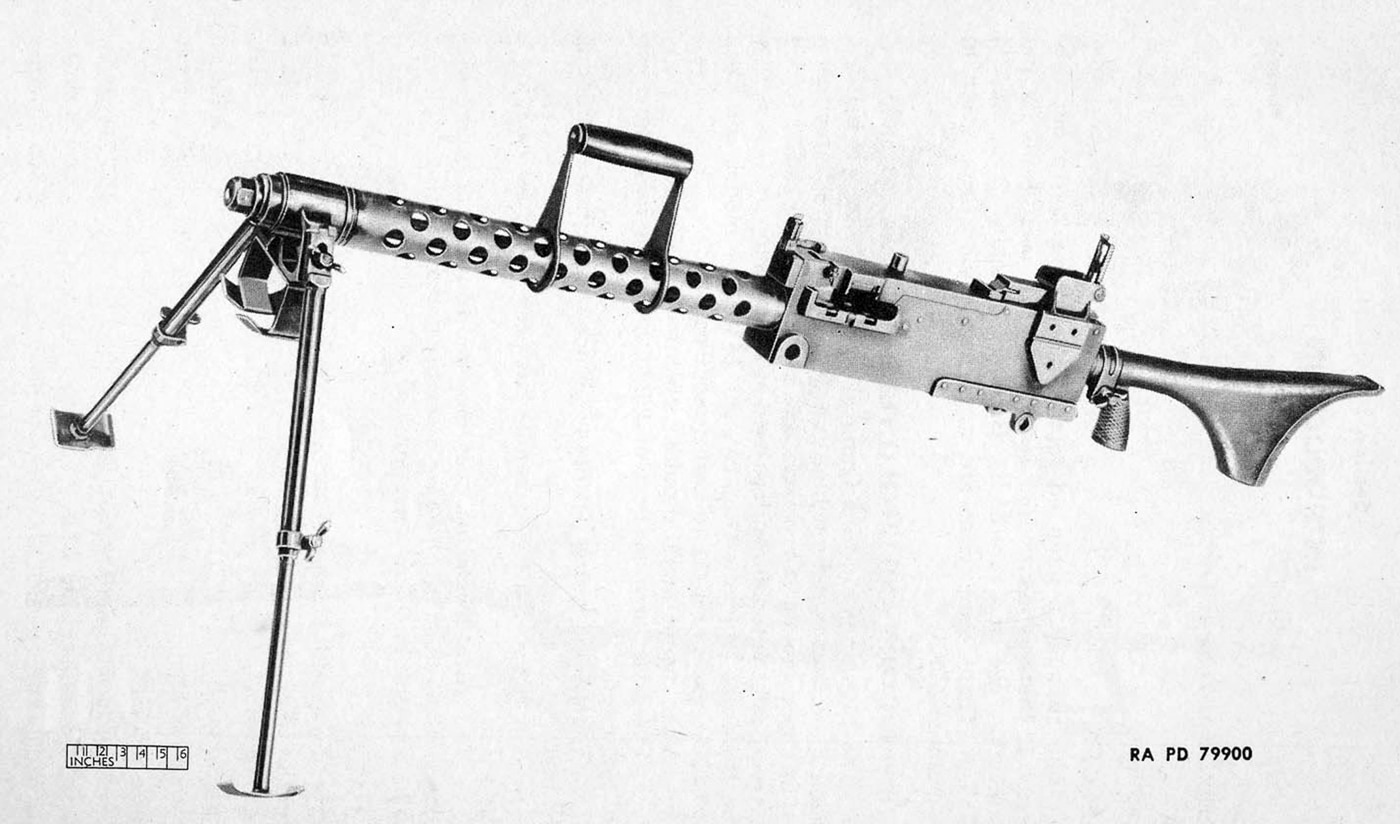
The Infantry Board wanted something to provide to the troops in a hurry, maintaining that a “from scratch” development of a new MG would take far too long. They contended that the Browning M1919A4 could be equipped with a bipod (similar to the BAR M1918A2), a lighter barrel, a shoulder rest, and a carrying handle (similar to that used on the British Bren LMG).
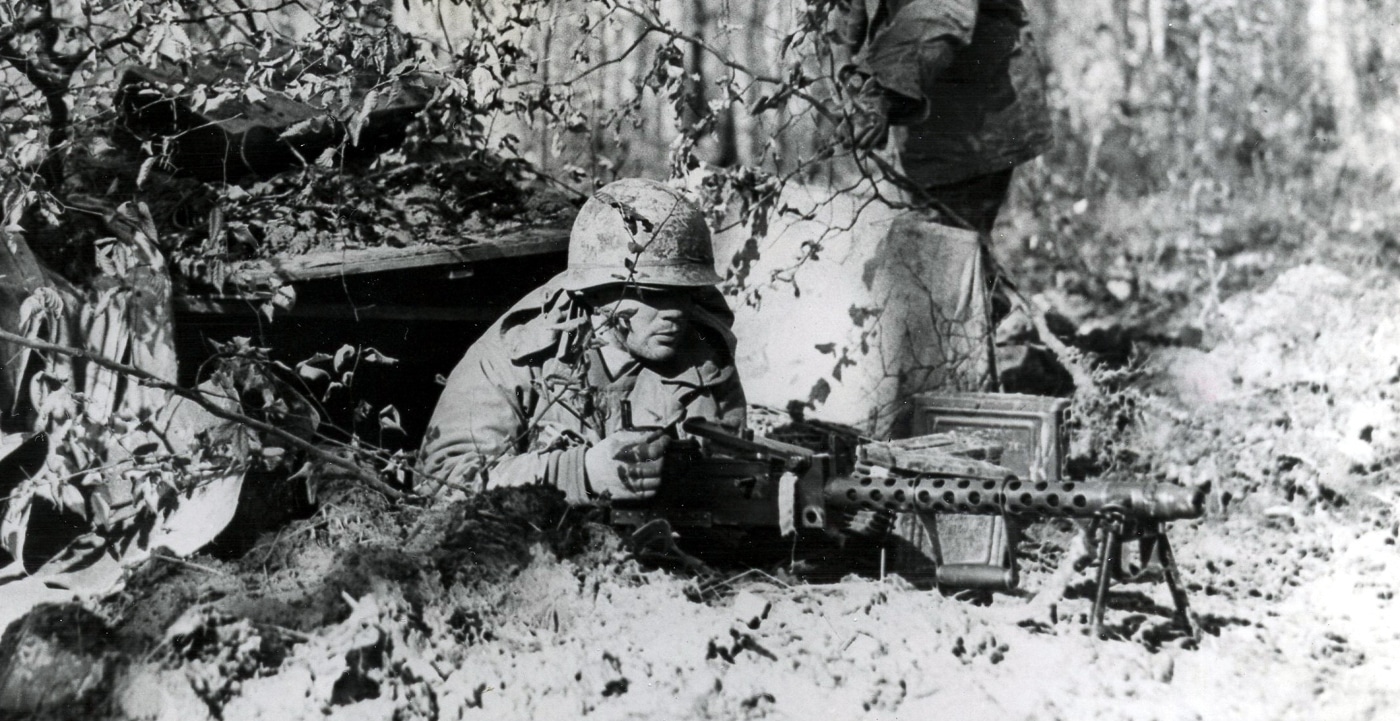
The Infantry Board won that argument, concluding “The Infantry Board considers the modification of the M1919A4 Machine Gun a matter of major importance…” Consequently, on April 10, 1943, the modified M1919A4 became the “M1919A6”, classified as Substitute Standard.
A Heavy Light?
The M1919A6 was, in many ways, an unhappy compromise — but it all depended on to whom you spoke. The “A6” was little different from the “A4”, which allowed for minimal additional training. However, the complete A6, was heavier than an A4 without its tripod, so it was no more “man-portable” than its predecessor. On the other hand, the A6 could be mounted on the M2 tripod, just like the A4. The A6 fired a little bit faster, but not enough to be noticeable. In the end, G.I.s couldn’t really tell the difference between the two, primarily because there wasn’t much to differentiate them other than cosmetics.
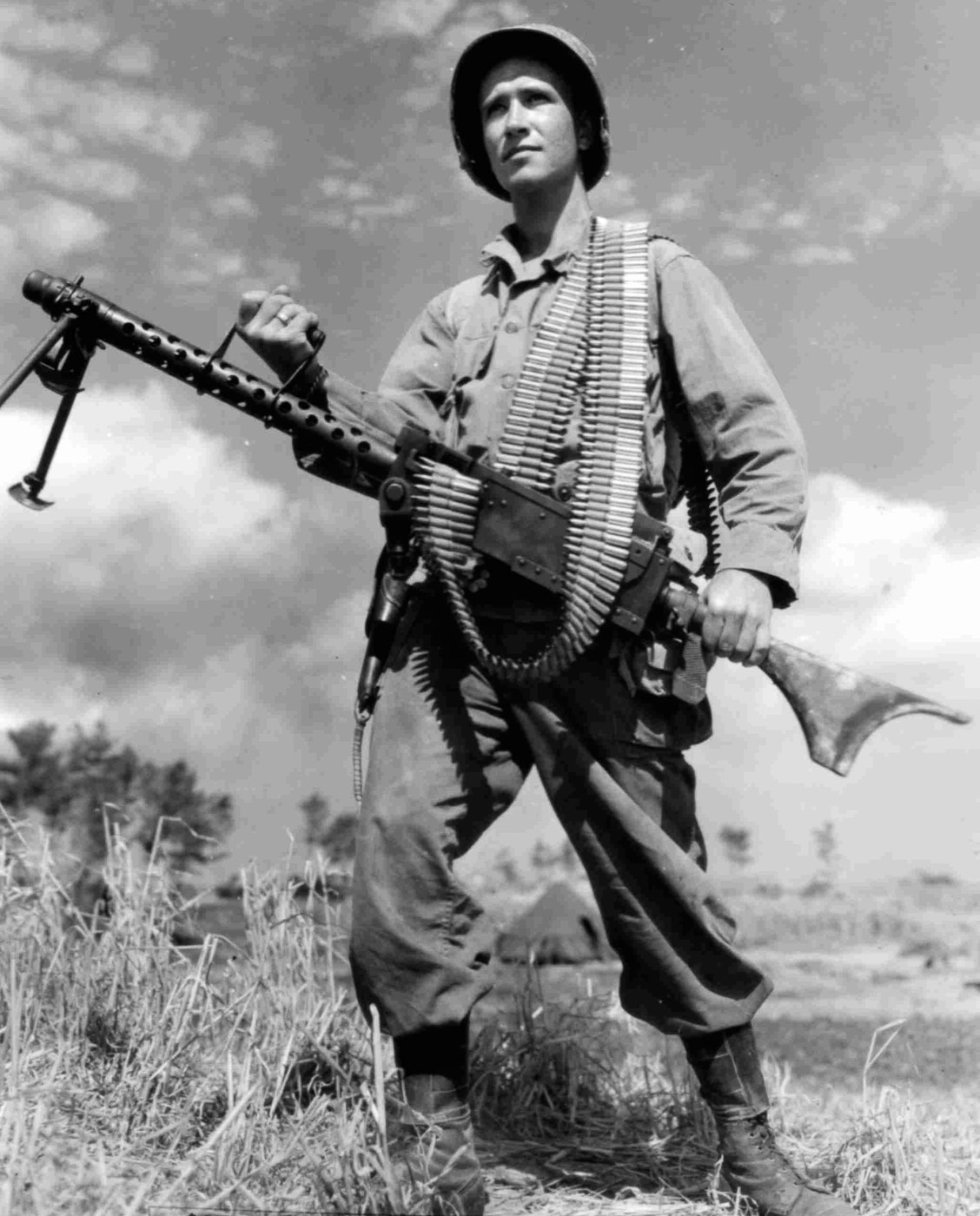
Often overlooked in this debate is the fact that American MG crews already practiced using the M1919A4 without its tripod in the “combat assault” mode. Grasping the barrel with a pad, towel, or asbestos glove, the gunner could fire the M1919 (or even the water-cooled .30-caliber M1917A1) from the hip.
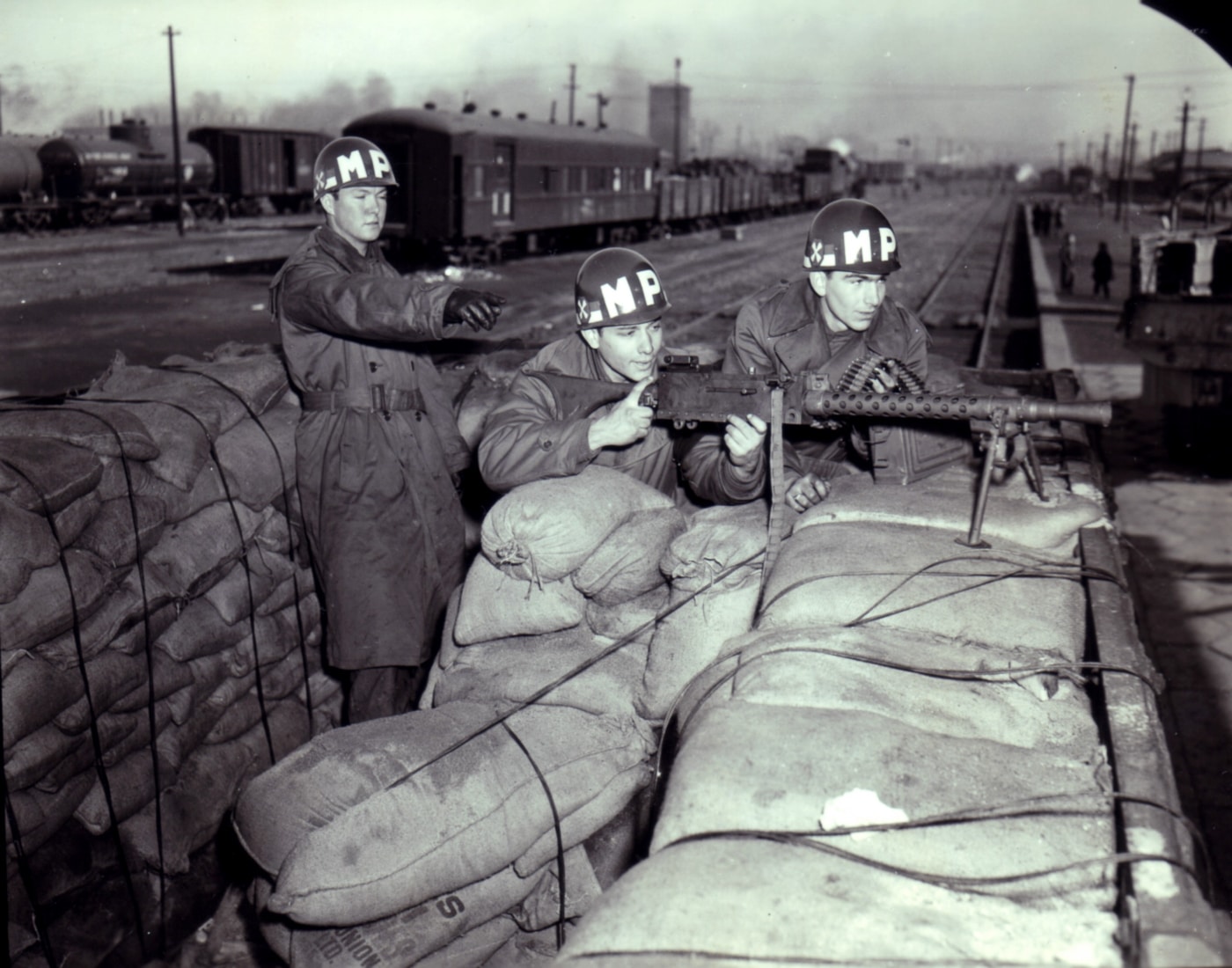
If the tripod was lost or otherwise unavailable, the gun could also be rested on a sandbag, berm, or windowsill. Combat necessity and G.I. ingenuity created some flexibility in the use of the Browning M1919A4 even before the arrival of the A6.
MG42 Envy
One of the primary drivers behind the push to modify the M1919A4 was the impression made by the German GPMGs, the MG34 and MG42. The high cyclic rate of these weapons (the MG34 at 900+ rpm, the MG42 at 1200+ rpm), coupled with their easy portability, captured the attention of the G.I.s and U.S. Army planners alike — at one point reaching a bit of an obsession.
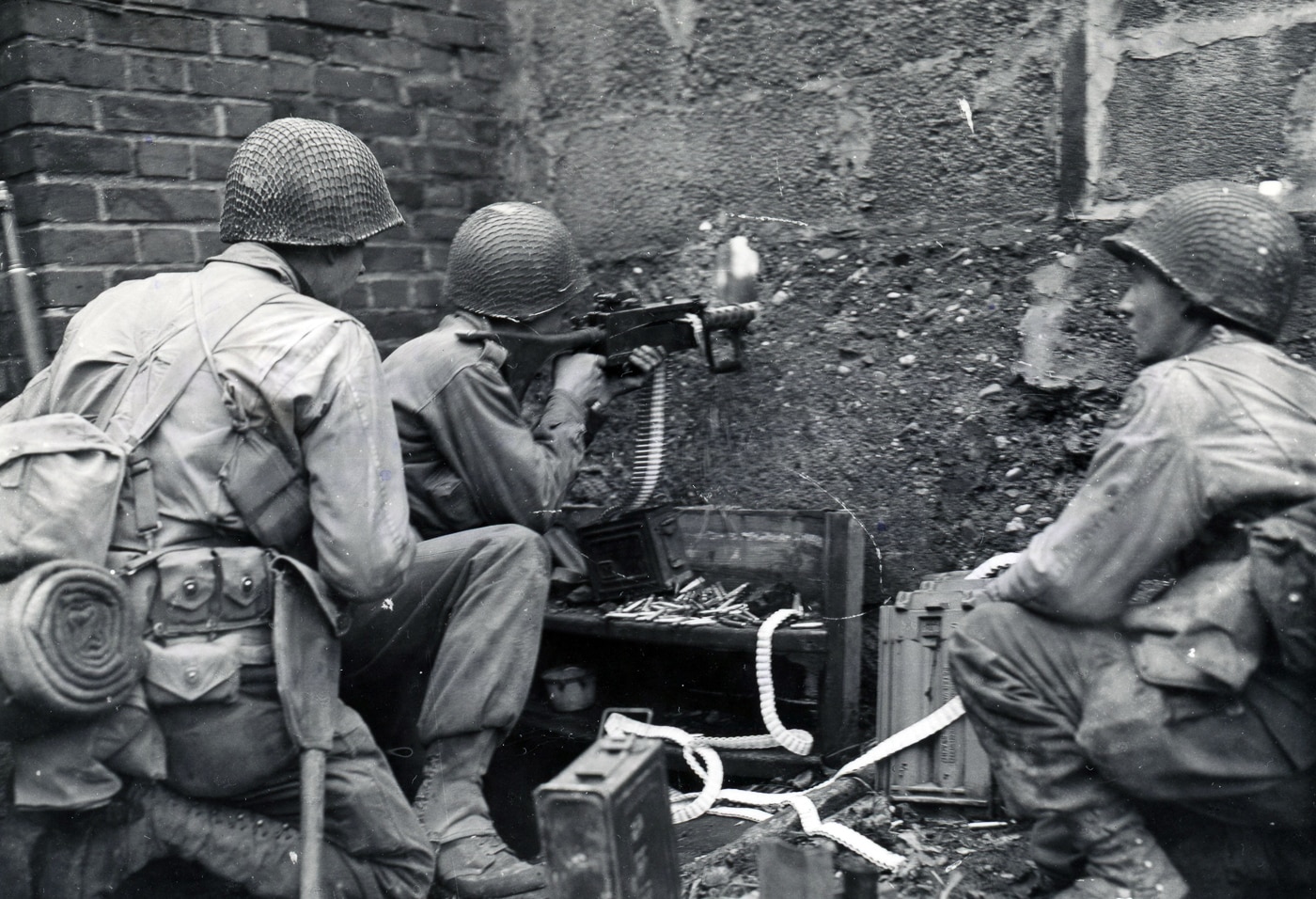
U.S. Ordnance sought to copy the MG42 in .30-06 caliber — resulting in the ill-fated US T24 Machine Gun. After a miserable performance during initial testing, the T24 was canceled and the M1919A6 was pushed ahead. American troops would have to wait until 1959 to receive their true General-purpose Machine Gun in the form of the M60 (chambered in 7.62x51mm NATO).
M1919A6 Mods
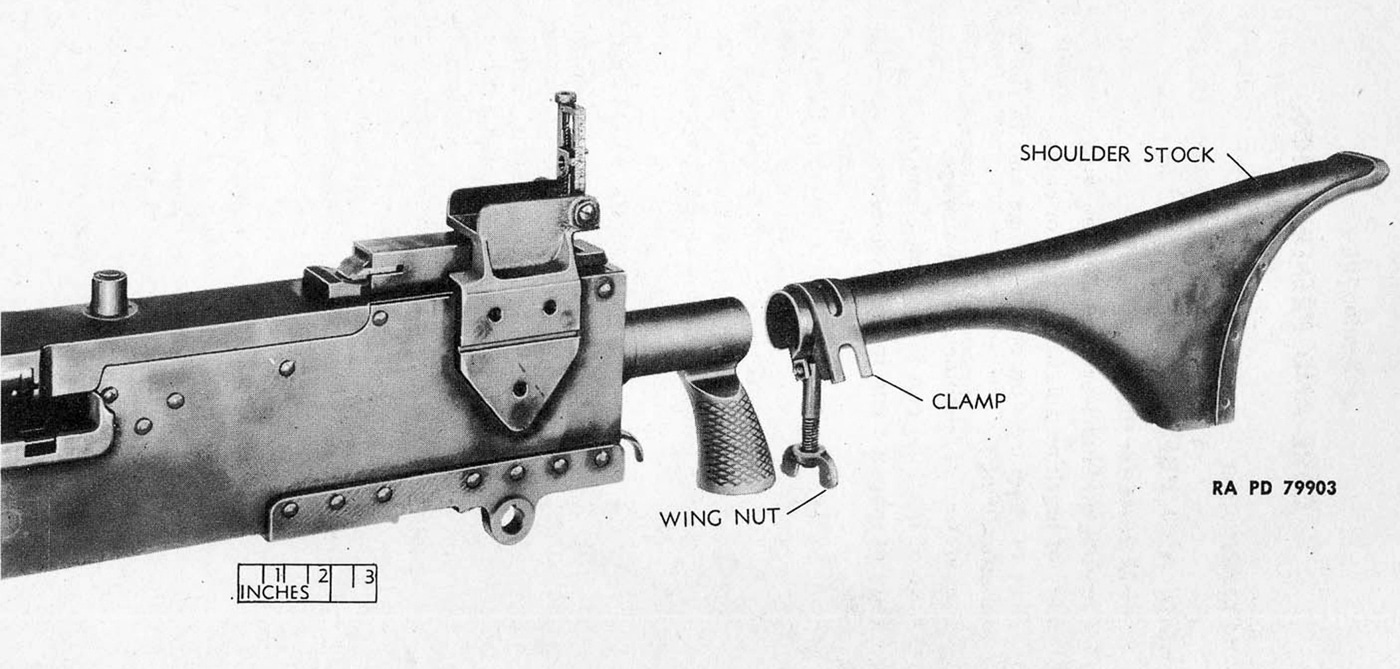
- A detachable shoulder stock made of pressed metal
- A lighter barrel (2.5 lbs. less) than the standard M1919A4
- A folding bipod (detachable)
- A carrying handle could be attached to the barrel
- Muzzle bearing that served as a muzzle booster and bipod attachment
In Service
The new muzzle device allowed the crew to replace the M1919A6 barrel from the front — providing an improvement over A4 (which removed the barrel from the rear; a complicated process). Regardless, changing the barrel of an A4 or A6 was quite awkward compared to most light machine guns of the era. Despite its modification to be a “light machine gun”, the M1919A6 retained its ability to be mounted to the M1917A1, M2 or M74 tripods.
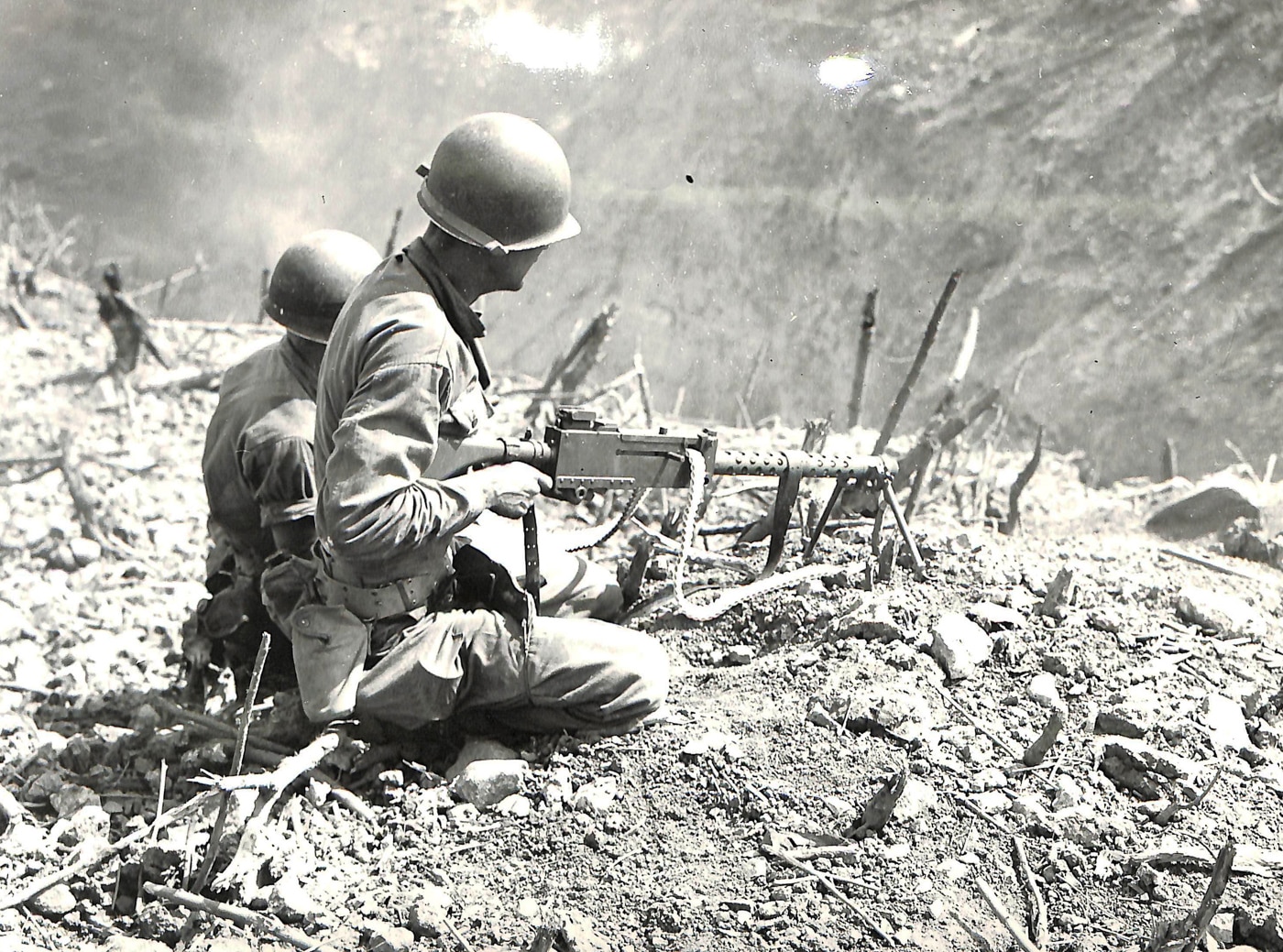
More than 43,000 M1919A6s were made by Saginaw Steering Gear Division of General Motors between September 1943 and the end of 1945. The modified Browning guns were in action by early 1944, with the bulk of the early M1919A6s issued to troops in the European Theater of Operations (ETO).
The M1919A6 guns can be seen in action (with and without their shoulder stocks) in increasing numbers during the last year of World War II. The gun had few vices, and other than its hefty weight the A6 offered service equal to that of the A4. The M1919A6 soldiered on through the Korean War and was issued to ARVN forces in the early days of the Vietnam War. West German troops also used them during the early 1960s.
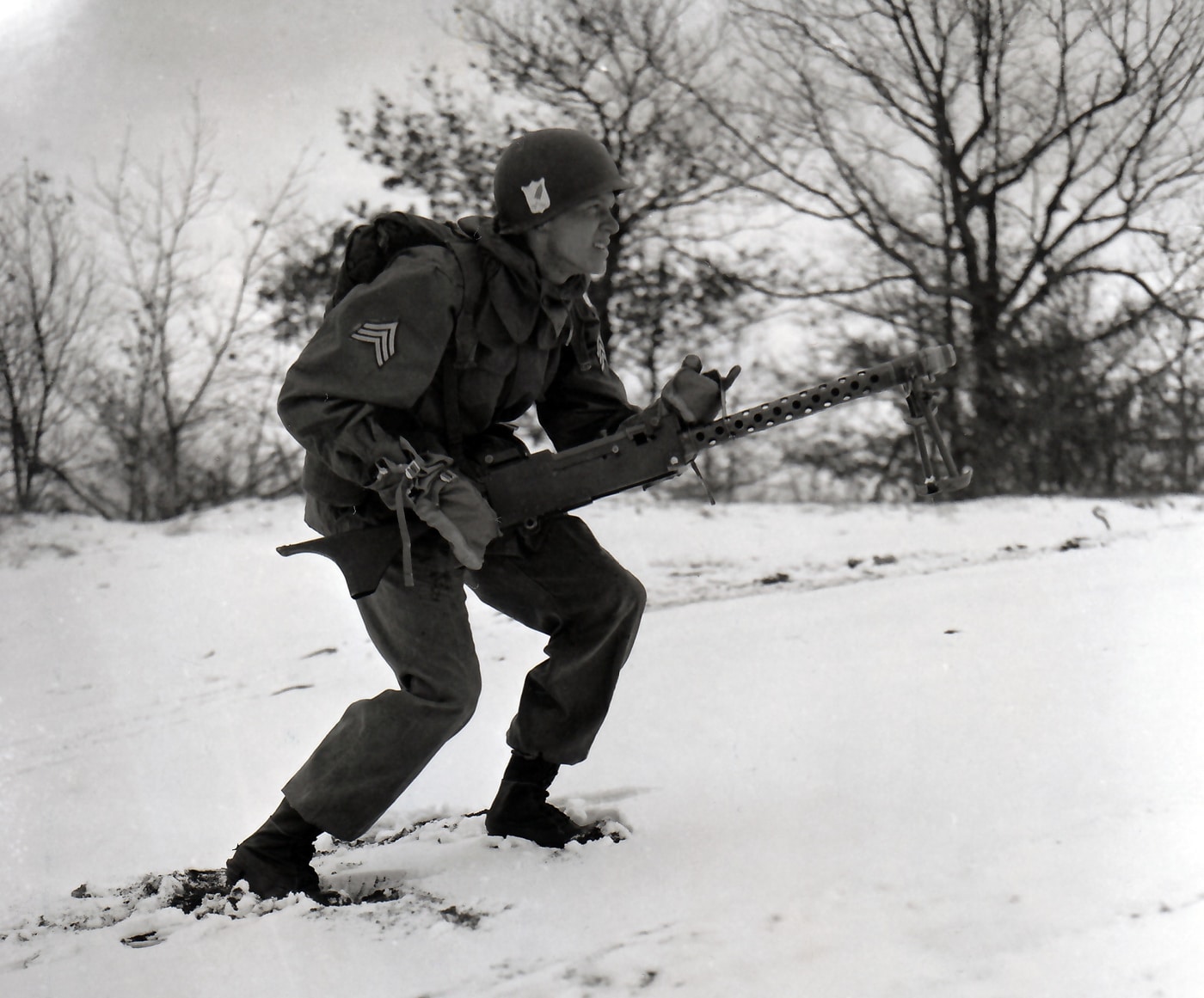
By the Book
A few notes from the 1945 manual on the Browning M1919A6:
General data.
Weight of gun with bipod and shoulder stock (pounds) 32.50
Weight of barrel (pounds) 4.65
Weight of shoulder stock (pounds) 1.75
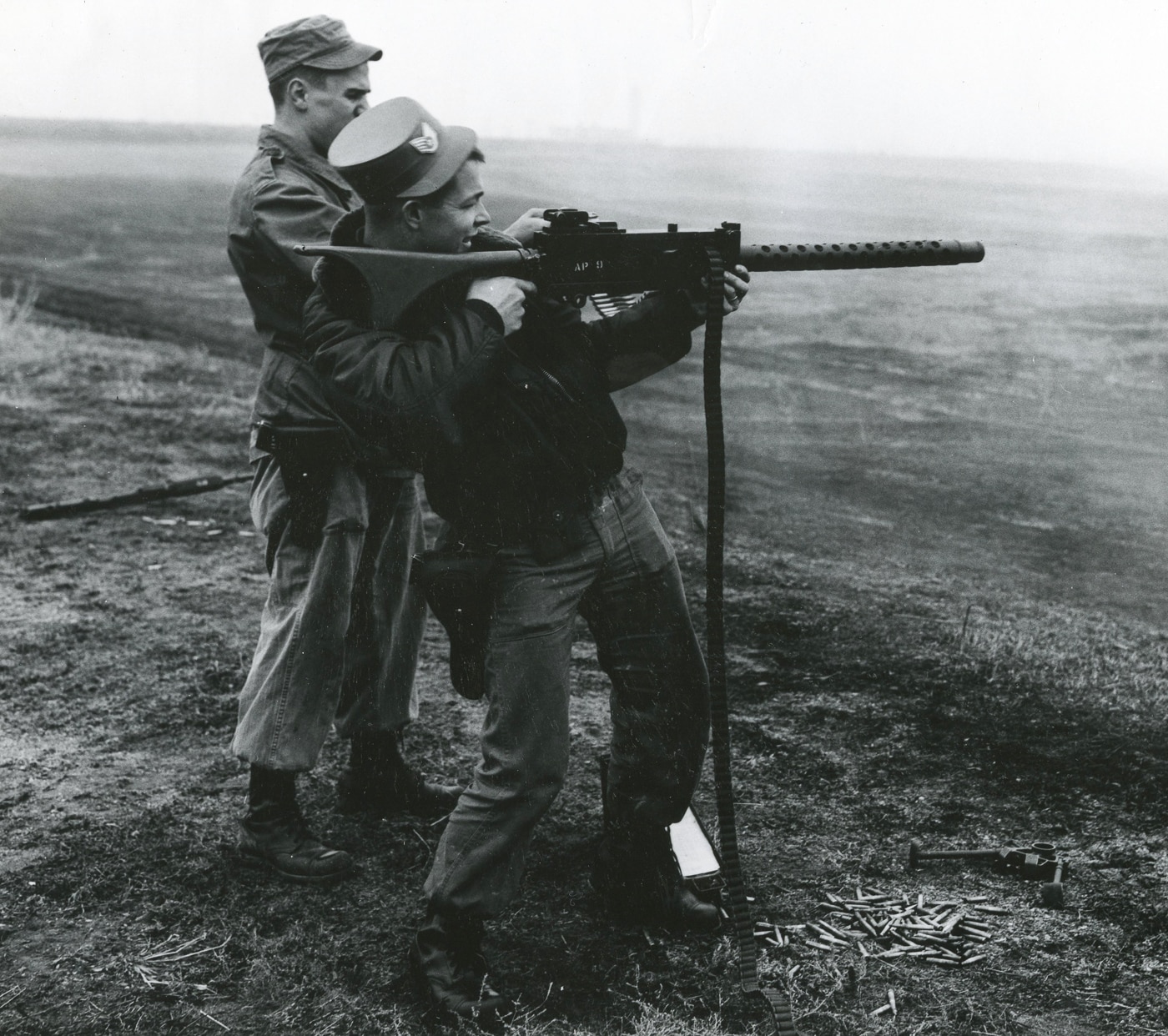
Principle of operation. The M1919A6 machine gun operates in the same manner as the M1919A4 gun. A booster cap is furnished with the M1919A6 gun to speed up the cyclic rate. It is affixed to the front barrel bearing by means of a detachable retaining clip. This booster cap traps some of the gas in the barrel which acts to insure positive recoil action when the gun is fired at angles other than the usual horizontal.
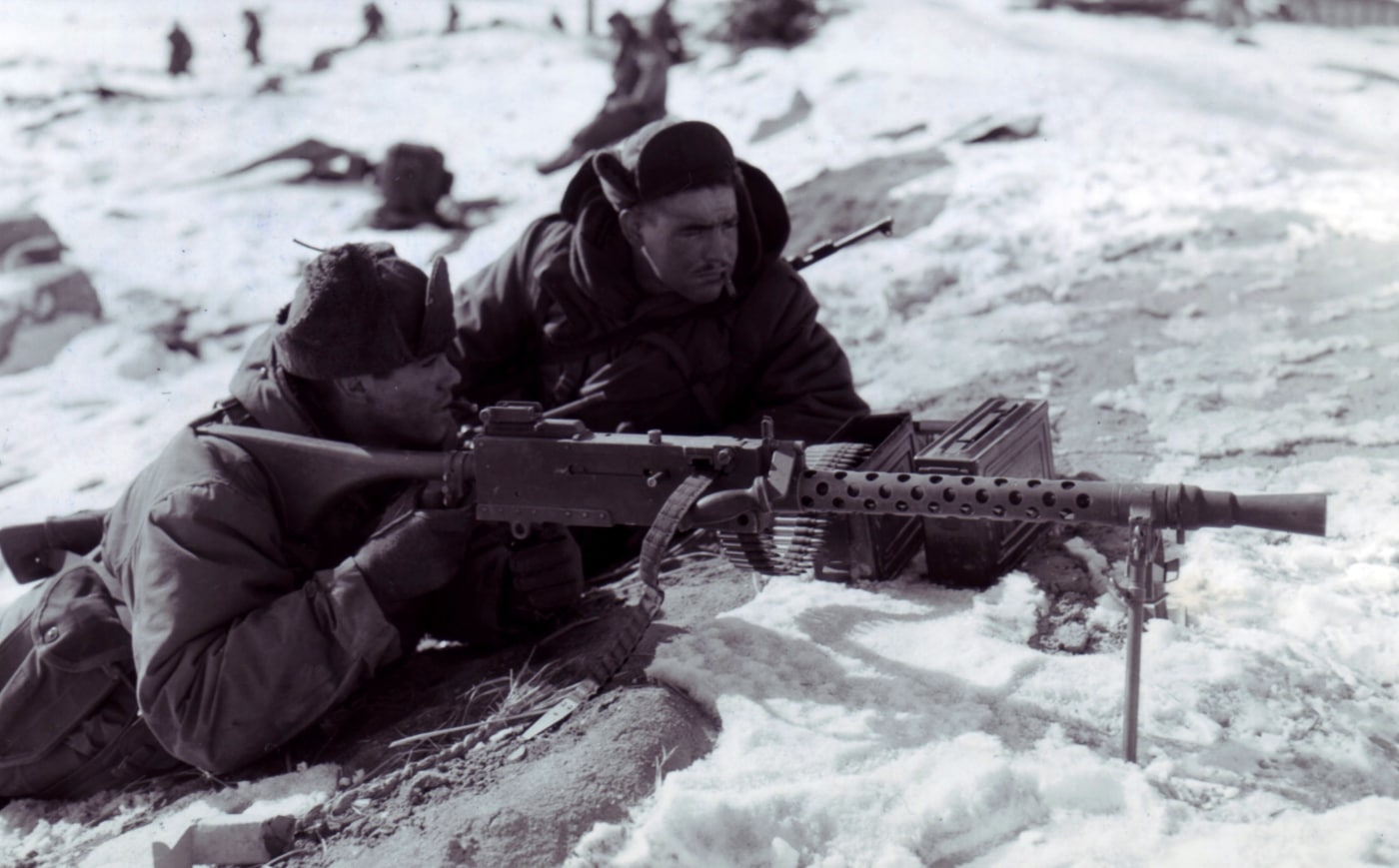
Ammunition Belt. The ammunition belt is made of woven fabric with loops, and with a metal strip at each end to facilitate loading. Some belts have a metal strip at one end only.
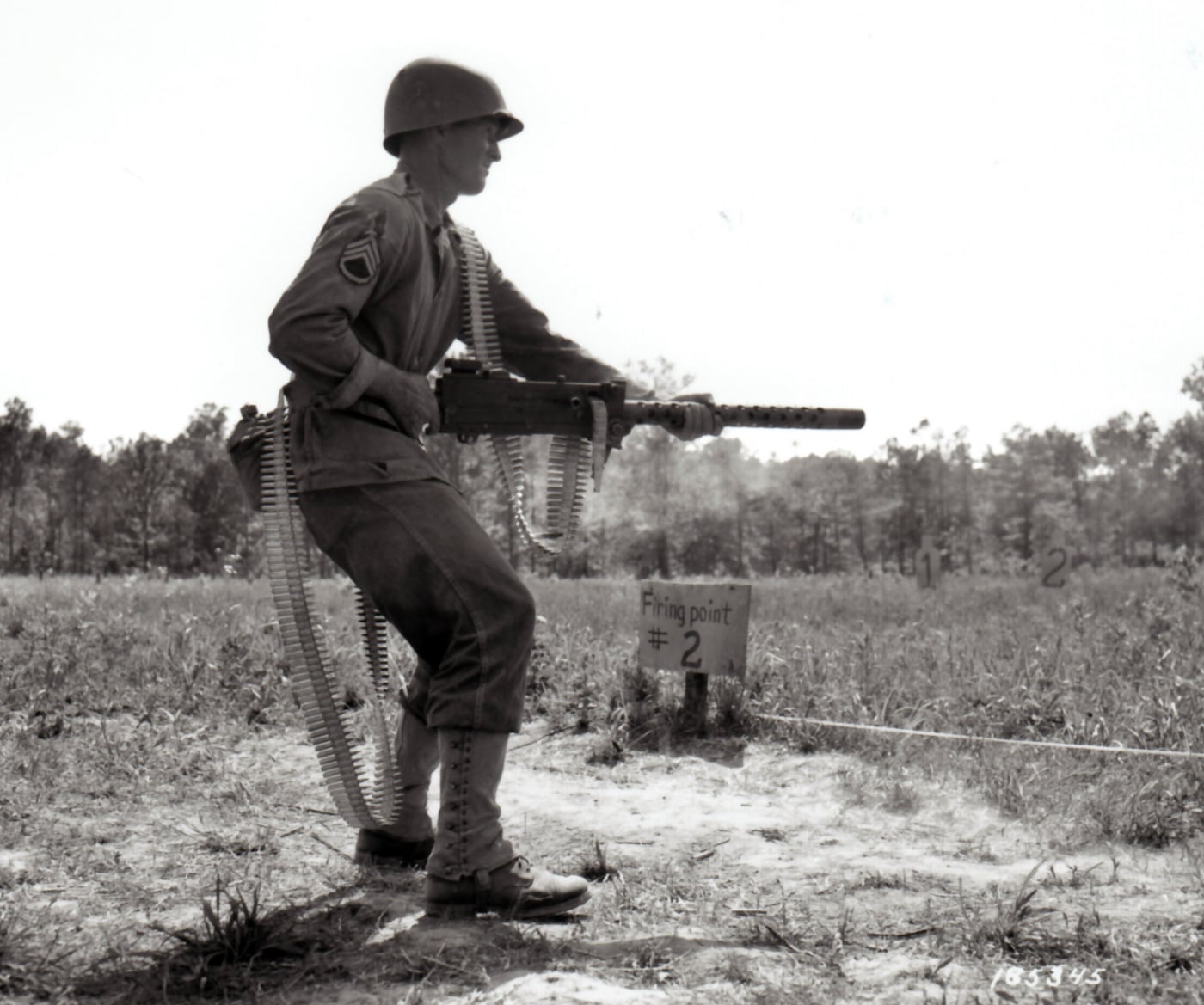
Gunner’s Position. The gunner (No. 1) is in a prone position such that a line in prolongation of the axis of the bore will pass through the right shoulder and the center of the buttocks. This forms a pocket for the shoulder stock between the neck and the right shoulder and decreases lateral movement of the gun while firing. The inner sides of the feet are flat on the ground, toes pointing outward, and legs well separated. The upper part of the body rests on the elbows. The elbows are out to the sides to form a stable base of support for the rear of the gun. The left hand grasps the shoulder stock, palm down. The right hand grasps the pistol grip firmly, with the forefinger on the trigger. The eyes are focused on the target through the peep sight. The body is relaxed. The breath is held during aiming and firing. A little more air is drawn into the lungs than is used in an ordinary breath, a little is let out, and the rest held naturally and without restraint. Small lateral adjustments of the line of sight can be made by moving the shoulders. If lateral movement is sufficient to require movement of the elbows the entire body is shifted.
M1919A6 Conclusion
While the M1919A6 could be viewed overall as an unhappy compromise, it did serve its purpose and performed well in the field. While it might not have achieved all its intended goals, it did arrive when needed and provide troops with the firepower they needed. And when it comes down to it, that’s what it needed to achieve.
Editor’s Note: Please be sure to check out The Armory Life Forum, where you can comment about our daily articles, as well as just talk guns and gear. Click the “Go To Forum Thread” link below to jump in and discuss this article and much more!
Join the Discussion
Continue Reading
Did you enjoy this article?

 229
229






